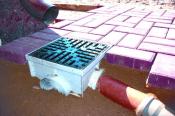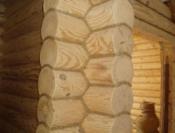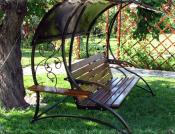Search
Login
Placing on a plot of garden and garden crops
There are certain rules for the location of plants and the choice of food area on the site - this increases the quality and quantity of the crop. Thickened or sparse plant placement reduces the possibility of a high yield. With an increase in the area of \u200b\u200bnutrition, the yield from one plant will increase, but the total yield will decrease.
A thickened arrangement at first gives a high percentage of yield, but the yield from one plant will approach the minimum, which leads to a general decrease with constantly deteriorating quality.
Density of distribution in most cases is determined by soil fertility. Fertile soil needs more thickening - this does not affect the quality and quantity of products.
Before planting fruit, berry and vegetable crops, you first need to draw up a plan for the placement of these plants. When drawing up the plan, the location of the outbuildings and the size of the plot should be taken into account.
An approximate set of garden and garden crops and their placement on a plot of 6 acres are offered. Fruit and berry crops are given in pieces: apple-6 (1-year-old variety, 2 - autumn, 3 - winter), pear - 1-2, cherry - 4-6, plum - 3-4, black currant - 7-8 , red currants - 3, gooseberries - 4, raspberries - 12-15, strawberries - 30-50 m2. 80-100 m2 is allocated for vegetables and potatoes. If on the site the groundwater level is above 3 cm, then the area of \u200b\u200bfruit trees is reduced, and berry bushes are increased. The location of crops should take into account the cardinal points: vegetables and strawberries grow well in the south, apples and pears in the north, and cherries and plums in the east.
- Fruit trees are planted at a distance of 3-4 m from the fence, placing plants in height from the edge to the center (tall species are planted at the fence). The distance between fruit crops also depends on their type: tall plants are planted no closer than 3 m (if possible more preferably 6-8 m), stone fruit - 2 m, shrubs - 1 m.
Cherries and plums are located at a distance of 1.5 m from each tree. Their ratio can be varied, but the total number should not exceed 10 pieces.
It is undesirable to plant berry bushes under fruit trees, because subsequently, the use of pesticides for spraying trees is possible. They are preferable to place on the south side of the site or in the form of hedges along the border of the garden.
The distance between the currant and gooseberry bushes is 1, 5 m, raspberries - 0, 5 m. Raspberries are planted in one row along the border of the garden, retreating from the fence of 0, 7 m.
Strawberries are planted at a distance of 15-20 cm from each other, between rows - 0, 7-0, 9 m (approximately 200-300 bushes). Raspberries are planted at a certain distance from the strawberries. Vegetable crops have beds. Early vegetables are planted on the first garden: radish, lettuce, dill, parsley. Potatoes are placed behind them; further - cucumbers, tomatoes; the next bed is carrots, beets and other root crops; garden plot complete with onion, garlic, peas.
In front of the potato, it makes sense to plant strawberries in several rows, arranging it as follows: 1st row - new planting, 2nd - young, 3rd - second year of fruiting, 4th - adult. This makes it possible to use crop rotation, which actively increases productivity. To do this, annually release a number of strawberries, where the next year vegetables are grown.
Mixed and compacted crops increase the return of each patch of land. At the same time, one should take into account the peculiarities of combined crops, because many of them - with different growing periods, vegetable plants are low and tall, some grow quickly, others are slower, differently demanding on light, heat, moisture, fertilizers. The selection should be made in such a way that the plants not only do not oppress each other, but also have a positive effect due to their biological data.
Potato and cucumbers, beans and onions, tomatoes and turnips are considered to be completely incompatible crops. But carrots and onions in densified crops mutually help each other out: they are not affected by the same larvae of flies, whereas when planted separately, the same plants suffer greatly from pests.
The following combinations are recommended: late cabbage - table beets, white cabbage - dill, salad, potatoes; but she doesn’t get along very well with tomatoes and beans. Friends of radish - beets, spinach, carrots, cucumber, pumpkin and tomato. It is preferable for fruit, berry and vegetable plants to immediately allocate a permanent place on the site, because when mixed, in a few years some plants will begin to grow and obscure and even inhibit intermediate crops (currants, gooseberries).





